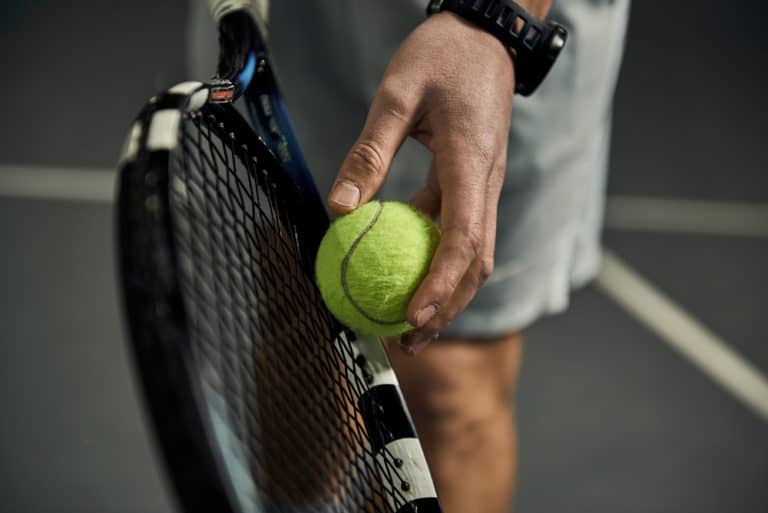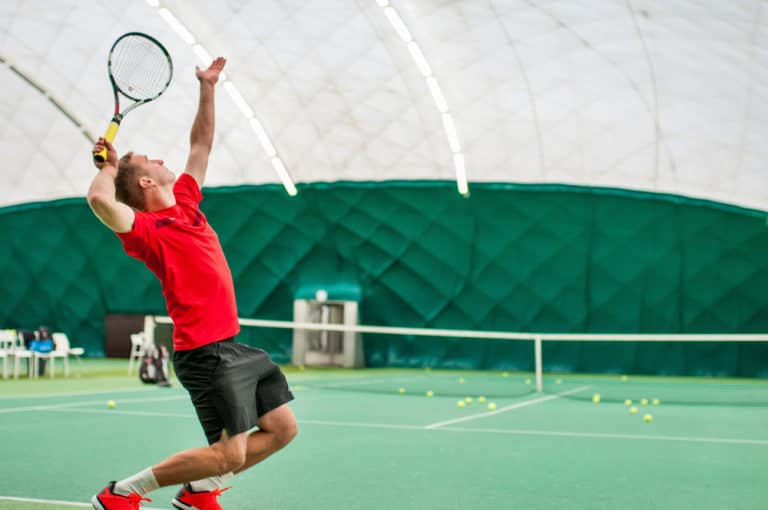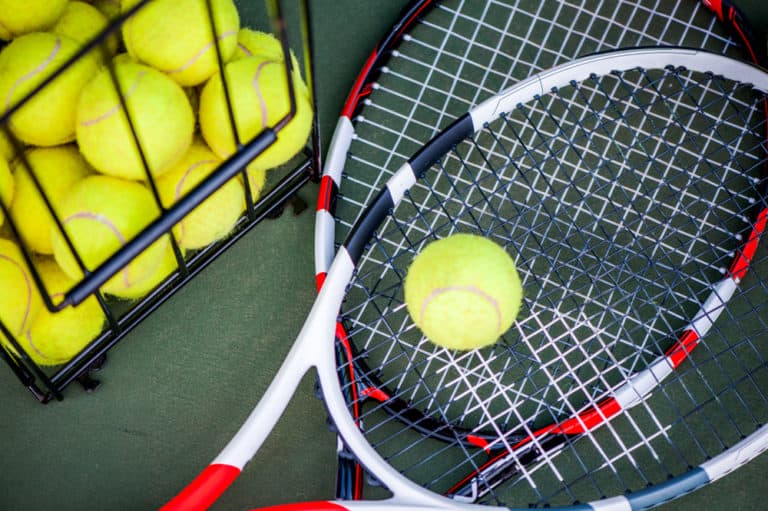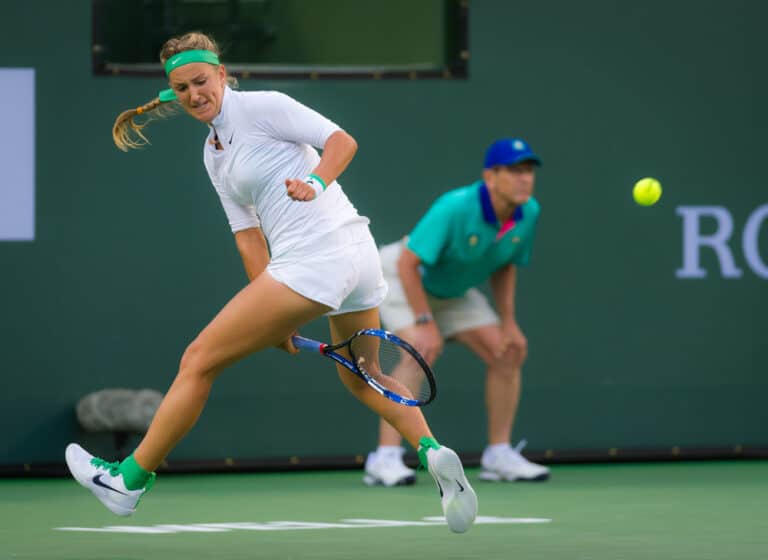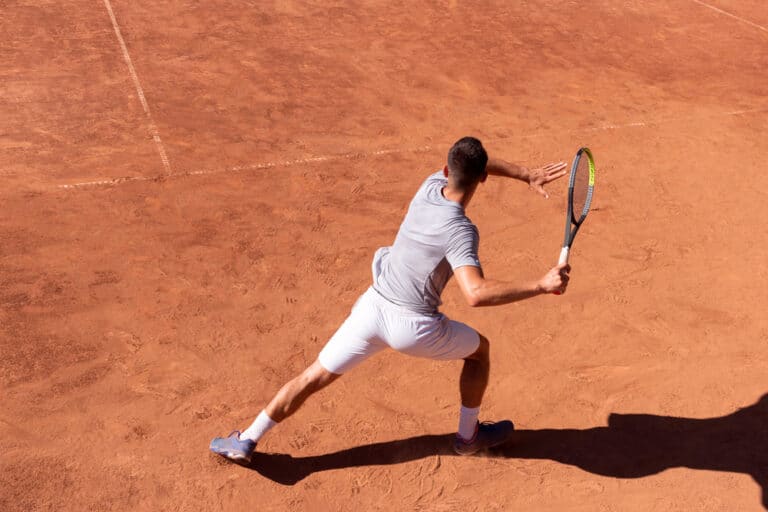Can Tennis Players Talk To Their Box?
Editorial credit: Andrew Will / Shutterstock.com
One of the aspects of professional tennis that has always fascinated me is how each player has a dedicated courtside box for their coaching team and partners. Often during the match, the camera will switch to the coach of one of the players at certain key moments of the game but the coach will be sitting there showing almost no expression at all until the match is over. In almost every other sport where a coach is present at the game, those coaches are constantly emotive and expressive. This has led me to ask whether tennis players can talk to their box. So, I set about finding out.
Tennis players are not allowed to talk to their box, with two exceptions. Firstly, if a match is suspended due to rain, players can talk to their coaches until the players are called back to the court. Second, Players on the WTA tour can call their coach to the court during one changeover each set.
Let’s take a much closer look at all of the instances where a tennis player is permitted to talk to their coach as well as what happens when a player talks or shouts in the direction of their box.
Can Tennis Players Talk To Their Box?
So many sports allow communication of some sort between coaches and athletes whether that be via hand signals or verbally via headsets. Tennis, especially at the Grand Slam level has been steadfastly opposed to any sort of interaction between players and their coaches once they have set foot onto the court.
When it comes to the Grand Slam tournaments, The Grand Slam Rule Book makes things very clear and explicitly prohibits any kind of coaching: “Players shall not receive coaching during a match (including the warm-up). Communications of any kind, audible or visible, between a player and a coach may be construed as coaching.” The ATP rule book that covers the remaining tournaments on the men’s circuit has an identically worded rule prohibiting any form of communication between players and coaches.
I have seen some tournaments on the WTA tour where players were allowed to summon their coach during a changeover. However, as WTA professional Jessica Pegula has stated in a press conference interactions with a coach have had very limited outcomes in a match.
The times when a player might benefit the most from having their coach speak to them are exactly the times when a player is having a “moment” on the court and will more likely shout at their coach to shut up rather than listen to them.
The Laver Cup has gone to the opposite extreme. Although there is no direct interaction with their coach, players have their team captain sitting on the players’ bench during changeovers and can talk to their team captain and teammates during each changeover. Thanks to overhead microphones, the interactions between players and coaches become part of the broadcast audio which makes for better content.
Taking the Laver Cup idea to the next level, what I think tournaments should do is give coaches and players headsets to communicate during every changeover. Then, the audio feed of that communication can be spliced into the live broadcast so that the viewers at home or via live feed can get even more value. Spectators in the stands would be able to listen to the live feed during changeovers as well.
Can You Talk To Your Box At Wimbledon?
Before we get into the details of players talking to their box at Wimbledon, we need to take a look at the three main governing bodies that regulate professional tennis. The two most well-known are the WTA (Women’s Tennis Association) and the ATP (Association of Tennis Professionals), which control the women’s and men’s professional tours, respectively. They also publish the official professional ranking lists for both singles and doubles players. The third of these is the ITF (International Tennis Federation) which has jurisdiction over all four of the Grand Slam tournaments. The ITF also controls the Fed Cup for women, the Davis Cup for men, and all of the tournaments on the juniors’ tour.
The ITF prohibits players from communicating in any way with their coach at any time during a match. This includes talking to their box. As one of the four Grand Slam tournaments, players are not permitted to talk to their box at Wimbledon.
This prohibition of communicating with their coaches even extends to when players take their permitted bathroom breaks during a match. That is why players are accompanied by a match official when going to the bathroom in order to ensure that there is no communication with their coach on the way to the bathroom.
There is one notable exception to this rule. If a match is officially suspended because of rain and the match clock is stopped, players are allowed to talk to their coaches until they are called back to the court to resume the match. The reason is that the communication ban is for “on-court” communication and when players leave the court during a suspension due to rain, they are no longer “on-court”. Irrespective of whether the suspension is for 24 hours or only a few minutes, players have unlimited access to their coaches.
What Does It Mean When A Tennis Player Talks To His Box?
As you can imagine from what I have told you so far, a player walking to their box while they are on the same end of the court as their box and asking their coach for advice would be a clear violation of the rules. In the same way, coaches are not allowed to call out instructions to their players, either between points or at changeovers.
However, we often see frustrated players yelling at their box. This is a way for that frustrated player to communicate with their coach. Whether or not this gets ruled a coaching violation depends entirely on how the coach responds. If the coach is able to maintain a poker face and not show any response, the player and coach will avoid the rule violation and the fine of up to $5.000.
There is another time when I often see communication between players and coaches that escape any punishment is when a player plays a winner and the entire crowd leaps to their feet and cheers. At that moment the player’s coach will also leap to their feet with the crowd and cheer. After playing a winner you will see a player pumping their fist and sometimes shouting. While doing that they will have eye contact with their coach and use that brief moment of communication to pump up their motivation even further.
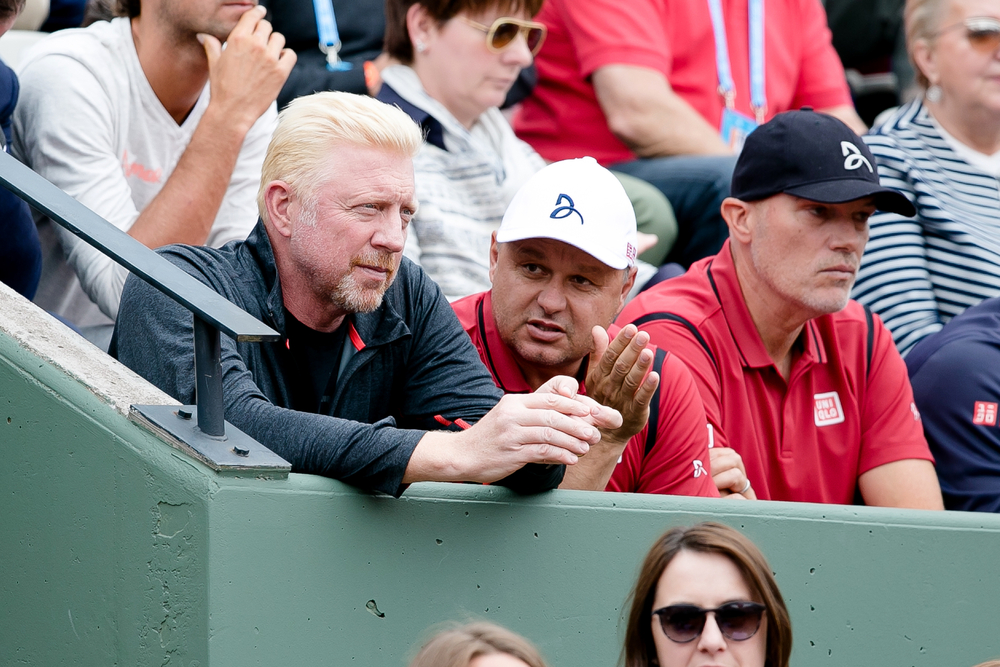
Why Do Tennis Players Yell At Their Box?
If a player is feeling frustrated that their game plan isn’t working they will often scream at their box to vent their frustration. This is because the coach will know what the game plan is and will know what the player is thinking.
In order to avoid a coaching rule violation the coach may not show any kind of verbal or physical response to the outburst. However, even this can help players refocus after venting their frustration. After a second or two of eye contact with their coach is often all a player needs to reset themselves mentally for the next phase of the game.
Can Tennis Players Talk To Their Coaches During A Match?
Tennis players on the ATP men’s tour are forbidden from talking to their coaches during the course of a match. The same goes for both men and women playing in any of the four Grand Slam events. However, the women playing on the WTA tour have the option to call for their coach once during each set during the course of a changeover.
The rule that allows the women to speak to their coach during the course of a match during a changeover has one contingency though. If a player needs to take a bathroom break during the course of a set, that player forfeits the opportunity to speak to the coach during the rest of that specific set. Taking into account that a changeover is normally 90 seconds in length during the course of a set and 2 minutes in length between sets it does not give a player very much time to speak to the coach.
These kinds of discussions that the player has with a coach during the course of a match will be limited to basic strategies as well as switching between game plans that were worked out before the match started. There is simply not enough time for any coaching that is more complex than that.
If a player is struggling it can often take just a few words with their coach to reset them mentally for the next portion of the match. The players on the WTA tour say that the ability to call on their coach has very little impact on their matches. That may be so that 90 seconds of each set will not make a massive difference over the course of a match. However, the ability to have your coach at your side at a crucial moment can make a difference in a player’s mindset and shift the momentum of the match.
Why Don’t Tennis Players Talk To Each Other?
None of the rules in tennis specifically prohibit you from talking to your opponent. However, there is a rule that states that you’re not allowed to distract your opponent while they are playing a shot. From this rule, you can see that you will not be allowed to say something to your opponent as they are about to hit the ball because that will be classified as a distraction.
In general, players in the professional circuit will not be talking to each other during the course of the match beyond maybe a couple of words before the match starts and then a few words when they shake hands after the match is concluded.
One notable exception to this general principle of professional players not speaking to each other during the course of a game was a particularly memorable incident between Lleyton Hewitt and Jack Sock in 2016 at the Hoffman Cup in Perth, Australia. Lleyton Hewitt played a service that was called out by the line judge. Jack Sock was much closer to the ball than the line judge or anyone else. So he looked across at his opponent and said loud enough for everybody to hear, including the empire, that Lleyton Hewitt should challenge the line call.
Hewitt then did challenge the line call at Jack Sock’s suggestion. The video review showed that the board was indeed in and Hewitt won the point to go 40 – love up. He went on to hold service and level the second set at 5 games a piece. This went on to become a viral video moment as it is unusual for players to talk to each other plus Jack Sock’s sportsmanship cost him the point and a potential chance to break Hewitt’s service at a crucial stage of the second set.
What Do The Tennis Players Say To Each Other After The Match Is Finished?
Under normal circumstances at the end of a professional tennis match, the players shake hands and congratulate each other on a game well played. Because, after all, most players are friends of the court no matter how fiercely competitive they are on the court.
The tennis circuit travels around the world all year round and therefore players tend tp forge friendships with each other off the court. This is because many players see each other more than they do their own families and friends at home.
There was one memorable interaction at the end of a match that I do remember. It was after the match between Andy Murray and Alexander Zverev. It was Zverev’s first tournament back after his severe ankle injury.
Even though Murray had just beaten Zverev, Murray took the time to tell Zverev that he shouldn’t stress and that he’d be back to top form soon. This was an important insight from Murray who himself had only just returned to active play from an injury so severe that he had thought it would mean the end of his career.


